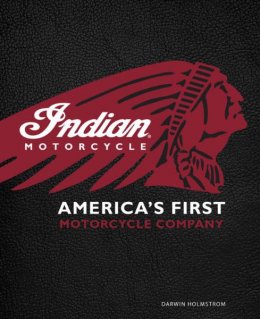Indian Motorcycle Jacket Review
 Darwin Holmstrom is the Senior Editor at Motorbooks, and prior to that he was the Midwest Editor for Motorcyclist magazine. He has co-written or was a contributor to more than 30 books about motorcycles, cars and guitars.
Darwin Holmstrom is the Senior Editor at Motorbooks, and prior to that he was the Midwest Editor for Motorcyclist magazine. He has co-written or was a contributor to more than 30 books about motorcycles, cars and guitars.
In the course of all this, he has helped create some of the best moto-books and worked with some of the most noted authors in the business. In the case of “Indian Motorcycle: America’s First Motorcycle Company, ” it is his name on the cover and it is evident all his experience and skills have been brought to bear in this landmark book.
Motorbooks also brought its long (50 years) experience in producing books to bear in this one, with the cover, binding and glossy high-quality bond the pages are printed on making this book an instant collector’s item in its own right.
Holmstrom’s work is the first to fully span the history of the Indian marque from its beginnings as the first mass-produced motorcycle—“motocycle” in official Indian company parlance at the time— in the U.S. in 1901, to its rapid rise to prominence in the early 20th century, decline and bankruptcy in 1953. He covers the multiple short-lived attempts to revive the brand from then until Polaris Industries acquired and revived the brand in 2011.
It is a daunting task to do the subject justice and it is evident that Holmstrom’s research was exhaustive in preparation of the narrative and selection of the 227 color and 76 black & white images he used to tell the tale.
How exhaustive was his research? Here’s an example—did you know there was an Indian called the “Bonneville?” It’s true; in 1947, Indian offered a high-performance version of the Chief called the Bonneville—a dozen years before Triumph adopted the name for its new high performance twin in 1959.
Holmstrom minces no words on recalling the company’s stunning fall from grace with consumers in the late 1940s. Bad financial management was part of it and that is explored, but the failures of product quality are astounding, as Holmstrom describes:
“In addition to lousy the quality control of suppliers the new Indians had profound problems with their fundamental engineering. Though G. Briggs Weaver had spent four years developing the modular engine systems, there were basic flaws with the design when it hit the market. For example, there was no way to adjust the tension on the primary drive chain.









